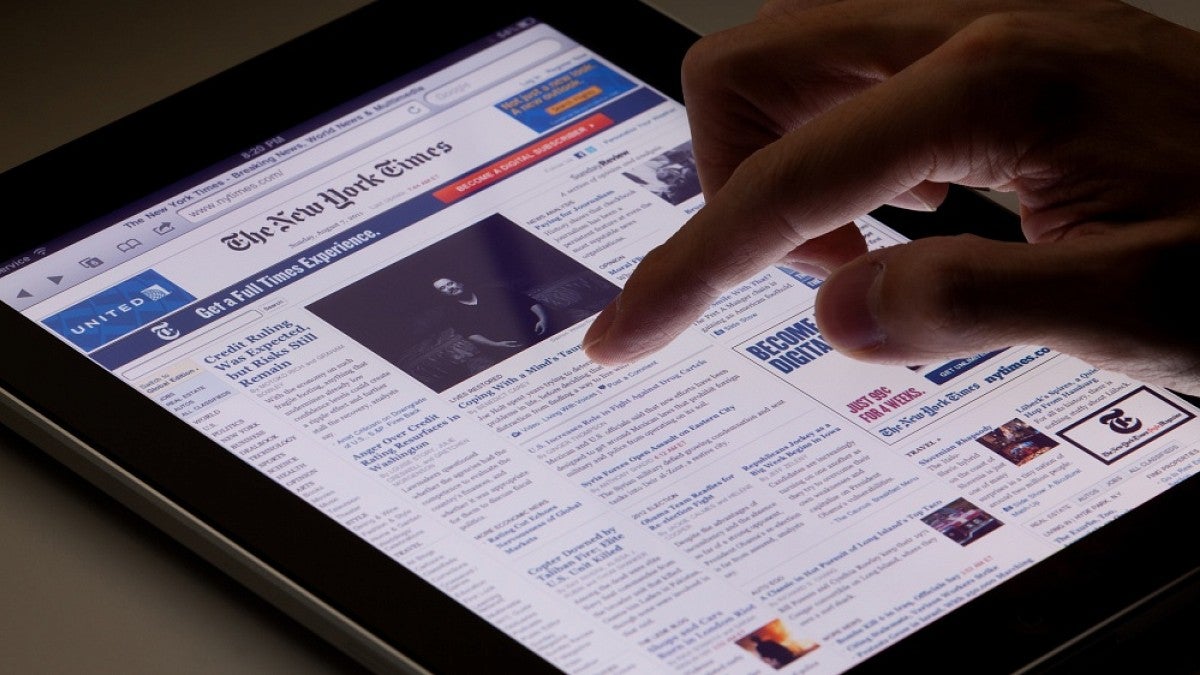UO researchers made headlines in more than 1,000 news stories in 2017 when reporters from top-tier media outlets turned to faculty members for articles on marine biology, early seafaring, chemistry and the microbiome, among other topics.
More than 1 million people read academic analyses written by UO faculty members thanks to the university’s partnership with The Conversation, an independent, nonprofit publisher of commentary and analysis authored by academics. The 34 articles produced by UO authors were republished by major outlets like Smithsonian Magazine, the Los Angeles Times, The Washington Post and Scientific American.
Here’s a recap of the top media placements. The list is based on total readership and how prominently the UO is featured.
1. The Misguided Student Crusade Against ‘Fascism’
The New York Times (40.5 million Twitter followers; 94,277,583 unique visitors per month): UO president Michael Schill penned a New York Times Op-Ed about free speech on campus.
http://www.nytimes.com/2017/10/23/opinion/fascism-protest-university-oregon.html?_r=1
2. It’s Better to Swim Alone, Yet Together, if You’re a Salp
The New York Times (40.5 million Twitter followers; 94,277,583 unique visitors per month): Kelly Sutherland, a marine biologist and assistant professor of biology in the Clark Honors College, talked about her paper on the swimming patterns of sea salp with the New York Times.
https://www.nytimes.com/2017/08/04/science/salps-chains.html?_r=0
3. Why Early Sailors Were Stalled for Millennia in the Pacific
National Geographic (21.3 million Twitter followers; 3,066,534 monthly readers): National Geographic featured Scott Fitzpatrick, professor of archaeology, in a story about his research on early seafaring.
https://www.nationalgeographic.com/magazine/2017/07/explore-adventure-colonizing-south-pacific/
4. Times When Being Alone Will Improve Your Life
Time (15.1M Twitter followers; 43,738,967 unique visitors per month; 3,028,013 weekly readers): UO geography professor Amy Lobben talked about how wayfinding plays a role in human evolution in TIME.
http://time.com/4723649/solitude-social-networks-benefits/
5. A Link Between Gambling and Financial Misreporting
The Wall Street Journal (15.3 million Twitter followers; 43,630,336 unique visitors per month; 1,180,460 readers): The Wall Street Journal interviewed UO accounting professor Dane Christensen about his research on a link between gambling and financial misreporting.
https://www.wsj.com/articles/a-link-between-gambling-and-financial-misreporting-1502676000
6. How timekeeping software helps companies nickel and dime their workers
Huffington Post (11.2 million Twitter followers; 22,910,627 unique visitors per month): UO law professor Elizabeth Tippett wrote an article for The Conversation that was picked up by the Daily Mail.
The story had 239,248 reads was also published in 19 other outlets, including the following:
- Salon (1 million Twitter followers; 23,922,031 unique visitors per month)
- Daily Mail (2.16 million Twitter followers; 7,858,588 unique visitors per month)
- San Francisco Chronicle/SFGate (446,000 Twitter followers; 15,587,910 unique visitors per month)
https://www.huffingtonpost.com/the-conversation-us/how-timekeeping-software_b_14130844.html
7. How to stay calmer, more alert and save the environment: Bring the weather indoors
The Washington Post (9.03 million Twitter followers; 43,942,322 unique visitors per month): UO architecture professor Kevin Nute’s Conversation a piece was published in the Washington Post and appeared in the print edition.
The story was also picked up by the following outlets:
- Associated Press (12.1 million Twitter followers; 8,450,866 unique visitors per month)
- Houston Chronicle (574K Twitter followers; 110,798 unique visitors per month - 236,092 daily readers)
- San Francisco Chronicle/SFGate (446,000 Twitter followers; 15,587,910 unique visitors per month)
8. Brewing a great cup of coffee depends on chemistry and physics
Scientific American: (3.37 million Twitter followers; 11,829,192 unique visitors per month; 456,689 monthly readers): Christopher Hendon, a chemistry professor and part of the UO’s Energy and Sustainable Materials Initiative, wrote a piece for The Conversation that was picked up by Scientific American.
The story had 150,258 reads and was published by 39 other outlets including the following:
- Business Insider (2.14 million Twitter followers; 36,838,006 unique visitors per month)
- Smithsonian Magazine (221,000 Twitter followers; 3,156,751 unique visitors per month; 1,840,077 monthly readers)
- Daily Mail (2.16 million Twitter followers; 7,858,588 unique visitors per month)
9. You (and most of the millions of holiday travelers you encounter) are washing your hands wrong
Scientific American (3.37 million Twitter followers; 11,829,192 unique visitors per month; 456,689 monthly readers): A Conversation article by Michelle Sconce Massaquoi, doctoral candidate, microbiology, was picked up by Scientific American.
The story had 47,514 reads in the first week of publishing and was also picked up by the following outlets:
- Associated Press (12.1 million Twitter followers; 8,450,866 unique visitors per month)
- Business Insider (2.14 million Twitter followers; 36,838,006 unique visitors per month)
- Philadelphia Inquirer (262,00 Twitter followers; 294,577 unique visitors per month; 229,372 daily readers)
https://www.scientificamerican.com/article/you-are-probably-washing-your-hands-wrong/
10. Healthy choices are neither good or bad; only thinking makes them so
Daily Mail (2.16 million Twitter followers; 7,858,588 unique visitors per month): UO psychology professor Elliot Berkman wrote an article for The Conversation that was picked up by the Daily Mail.
The story had 38,003 reads and also appeared in the following outlets:
- Salon (1 million Twitter followers; 23,922,031 unique visitors per month)
- Good Men Project (195,000 Twitter followers; 1,510,354 unique visitors per month)
- San Francisco Chronicle (446,000 Twitter followers; 15,587,910 unique visitors per month)
http://www.dailymail.co.uk/health/article-4930866/How-make-love-healthy-things.html


